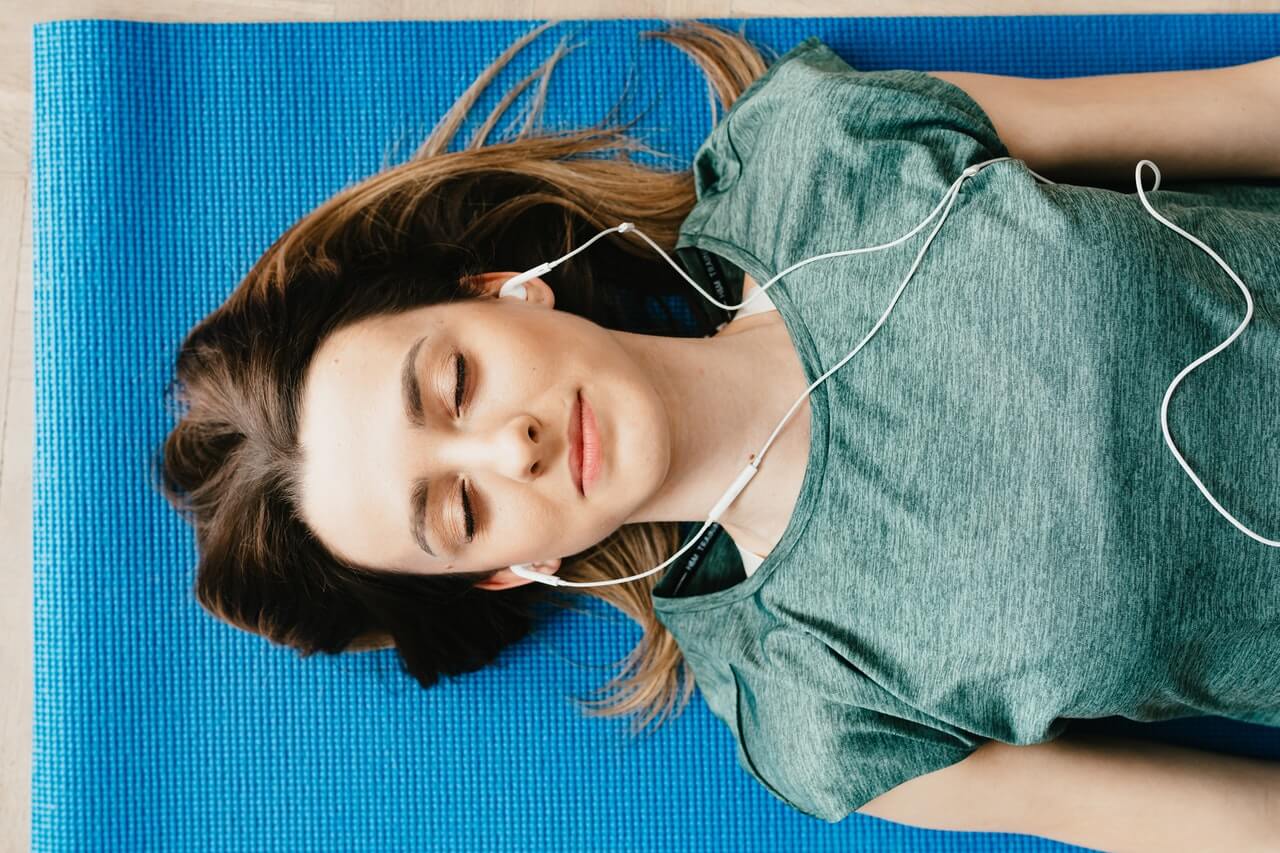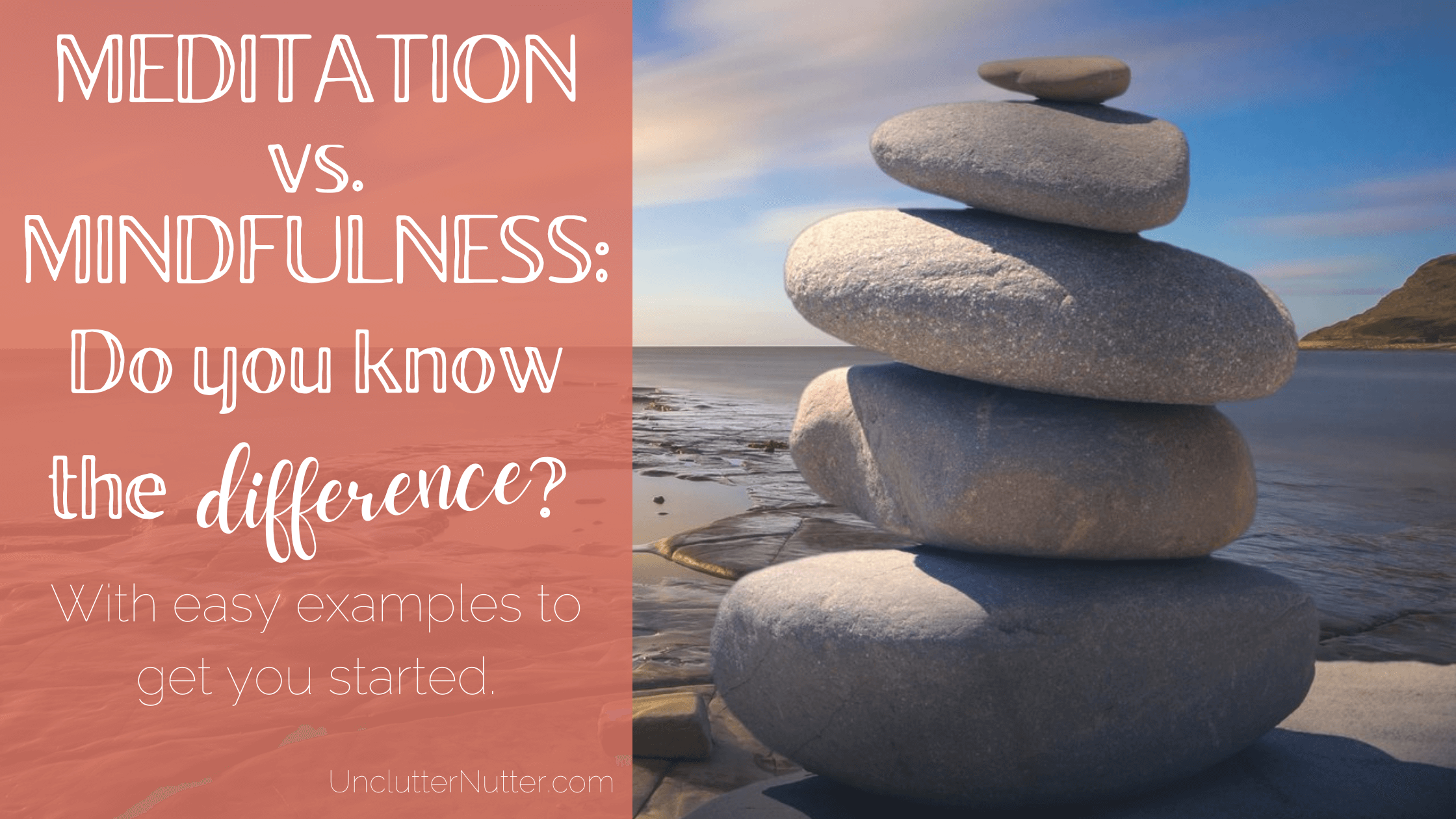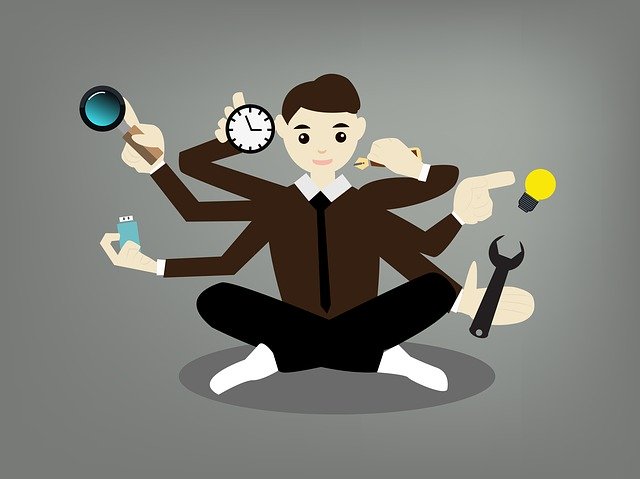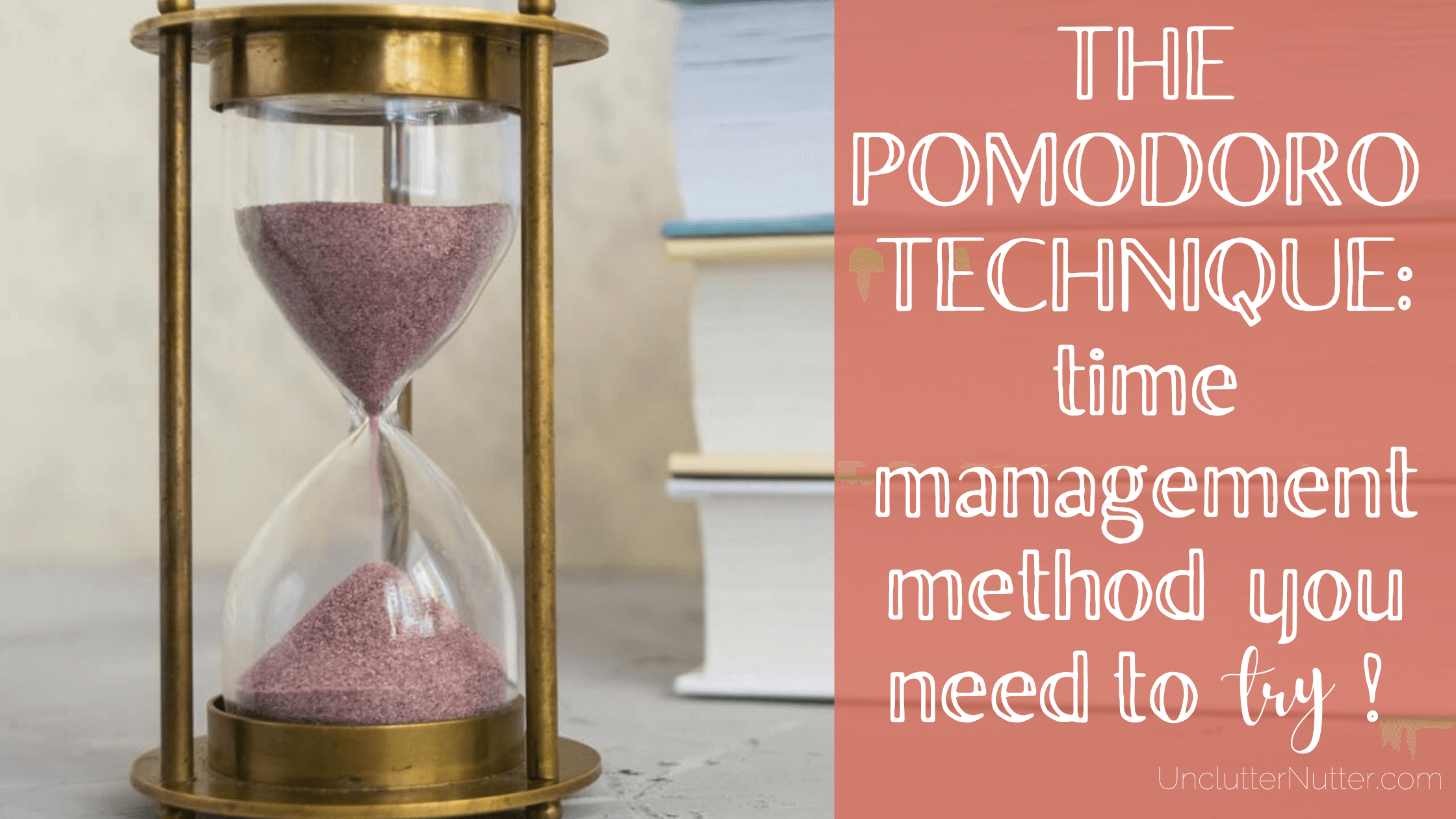We often hear about how helpful meditation and mindfulness can be for our mental health. What isn’t so clear is what we actually mean by mindfulness or meditation. In today’s world, both words are often used interchangeably which makes it even more confusing. For this reason, people often find themselves wondering, ‘what is the difference between meditation and mindfulness?’
Are meditation and mindfulness the same thing?
The short answer is no. However, sometimes they can be. We need to delve into each one in order to explain why these words are often used together. The truth is, while they are different overall, they are very closely related.
What is mindfulness?
It’s hard to simply define mindfulness because everyone seems to have a slightly different interpretation. Mindfulness is the quality of being more aware of your surroundings and what you are experiencing. This means being aware of what you’re touching, what you’re hearing, what you might smell, or taste, or see. This also includes being aware of your feelings and emotions. Mindfulness is all about being in the present and living in the moment.
…mindfulness is the idea of being more aware of what you are experiencing at any given moment but forming no judgments about it.
What is crucial to mindfulness is the idea that as thoughts and feelings pass through our minds, we experience and observe them without judgment and without trying to change them. We just simply notice them. What this means is that mindfulness is the act of being more aware of what you are experiencing at any given moment but forming no judgments about it. You are just simply ‘being’ without trying to be anything particular.

An example of being mindful
Mindfulness can be more traditional, like meditation in a seated posture, sitting quietly and focusing on our breath. However, mindfulness can also be more innovative and modernised, easy to fit into every day activities.
Mindful eating
For example, an act of mindfulness can be the concept of mindful eating. We tend to live busy lives and eating is a part of our day. Often times we have to squeeze our meals in between all of our other daily tasks. By eating mindfully, you are simply trying to be more aware of the food you are eating and trying to be more in the moment. This means being able to avoid distractions around you.
For many people, having a meal includes having the TV on, or multitasking while you’re eating, or eating quickly because you are in a hurry.
For mindful eating, for instance, you would eat slowly, enjoying every bite, chewing it thoroughly, focusing on how the food tastes and how it makes you feel. You would also naturally stop when you can feel that you’re full.
Challenges you might face
This all sounds super easy but that’s not the case in most of our lives. A simple task like this might actually be incredibly difficult.
Picture this: you’ve just cooked dinner for your whole family, you’re sitting at the table with children who want to tell you about their day, the TV is on in the background, your partner is asking about what the plans are for the weekend, you’re thinking about a project you’re leading at work, all while your mobile phone notifications are chiming…
Just like that, the goal of having a ‘mindful meal’ becomes almost an impossibility. No one is paying attention to the food they’re actually eating because there is so much else going on around them. Not that this is wrong in any way but this is what mindfulness aims to decrease.
Mindfulness is all about being more aware of the particular thing that you are doing, the moment that you are in. If there are so many things happening, it becomes more of a challenge for us to focus on everything that is happening all, and still manage to remain calm! This is why mindfulness is something that you work on and build up to in small steps.
Mindfulness exercises to try
You can start to live a more mindful life by doing some very simple things. To help you achieve mindfulness, here are some simple examples you could fit into your every-day life:
⚫ When someone is talking, make the focused effort to listen to them without the need to be doing something else at the same time. Focus only on them and what they are saying. To put it simply, be a good listener.
⚫ When you’re eating dinner, enjoy each bite and notice the sensations in your mouth and belly as you eat. Turn off the TV or background noise whenever possible. Don’t multitask while you’re eating.
⚫ Wake up and take a minute to think of an intention before you start your day. Sit on the side of your bed, take a deep breath and think of what your focus for the day is going to be. For instance, it could be to simply be kind, to be productive, to be patient with others or to eat healthily. It could be anything that you choose as a focus, giving you something to be mindful about throughout your day.
⚫ Simple breathing techniques help focus our attention on our breath and our body. Stand, sit or lie down (whatever suits the moment!) and take a few long, deep inhales and exhales. Feel the air entering your lungs and feel the expansion of your abdomen. Hear the breath and feel it as it moves in and out of your body. This is a great way to calm and relax the mind and body. Best of all, it can be done anywhere!
What is meditation?
Meditation is a wellness practice, a process of training the mind to achieve a heightened state of awareness or focus. Looking at the history of meditation, Mind Is The Master explains that the earliest evidence of meditation in practice originated in India between 5,000 and 3,500 BCE. While some practices and techniques are ancient and more specific and strict, there are many more modern practices of meditation that are easier to incorporate into our daily lives. What they all have in common is the focus on being present.
Meditation is a practice, a process of training the mind to achieve a heightened state of awareness or focus.
The key difference between meditation and mindfulness is that meditation is a practice, a process of training the mind where mindfulness is the quality of being more aware. Mindfulness is also an example of one method of meditation.
Types of meditation
As previously mentioned, mindfulness is an example of a style of meditation. It’s hard to know where to start when talking about examples of meditation because there are countless ways to meditate. Some require special postures and hand positions (called mudras), while other forms of meditation can be done in any position you like.
Certain forms of meditation require you to chant a mantra (a sacred thought, word or prayer) while others require silence. Some styles of meditation are connected to religion while others are not.
It’s also worth mentioning that the overall aim of meditation also varies where some more traditional meditations focus on the long-term goal of enlightenment, while others focus on dealing with stress, anxiety, relaxation and self-love, just to name a few. Here are a few types of mediation to be aware of.
Spiritual meditation
Mindworks explained it well when they said that spiritual meditation is the idea of connecting to something that is more than yourself, be it God, the Universe, universal energy or The Divine.
As our awareness and spiritual confidence increase, so do our desire and ability to be of benefit to others.
Mindworks
Movement meditation
Contrary to what many people think, not all meditation is sitting still. Movement meditation is all about moving your body while still being present. Practices like Yoga or Tai Chi, for example, have a connection to movement meditation. (This is a particularly good way to try meditation if you find it hard to sit still.)
Focused meditation
This type of meditation is all about focusing on something – one thing. This could be done sitting with your eyes closed and just focusing on your breath. Whatever you are focusing on, give it your undivided attention by noticing and enjoying all elements of the act.
Chanting meditation
As the name implies, chanting meditations involve repeating a specific word, phrase, prayer or even a sound. What you are chanting out loud is refereed to as a mantra, which helps connect you to the meaning of what you are chanting. In particular, it brings about a focused, yet calm, state of mind.
Visual meditation
Visual meditation is all about visualising in our minds, be it through guided meditations or on our own. By picturing a specific person, a situation, a setting or scenery, for example, it can help us focus on a feeling and bring about clarity and understanding. It can help to separate us from any negative connotations, bringing about a sense of forgiveness or acceptance. Specifically, visual meditation is great for goal setting.
Mindfulness
As already mentioned before, mindfulness is an example of a type of meditation pertaining to the quality of being mindful, aware of the present moment and what you are experiencing without judging it. A body scan is a good example of a mindfulness practice.

Meditation exercises to try:
Meditation can seem overwhelming because there are so many ways to meditate. Here are a few meditation practices to help you get started.
Guided meditations for visualisation
⚫ If you are unsure of how to start meditating on your own, follow a guided meditation. These can range anywhere from five minutes to a few hours long! It doesn’t matter how long you meditate for. At the end of the day, five minutes is better than not doing it at all. Find a guided meditation that you enjoy or a voice that you like listening to. Here are a few guided meditations for visualisation.
10 Minute Manifestation Meditation
Guided Meditation and Visualization for Stress Relief: A Forest Walk
Unlock Your Full Potential – A 10 minute Guided Visualization For success & Confidence
A simple chanting meditation
⚫ Try a simple chanting meditation. To begin with, sit on the floor with your legs crossed, or sit on a chair with your feet flat on the floor, placing your hands in your lap in a comfortable position.
Take a deep breath in through your nose and on the exhale, say the mantra ‘Om’ (pronounced ‘aum’). Hold the sound for as long as you are exhaling, until you are almost out of breath. It doesn’t have to be loud but you should feel the vibrations of the mantra in your head and throat. (The mantra Om is a Sanskrit symbol that represents the sound of the universe. It is believed that when chanting Om, the vibrations created match the original vibrations that took place when the world was created. In essence, it is considered to be the purest sound.)
Body scan
⚫ Do a body scan to take notice of how each part of your body is feeling, helping to focus on the areas that need to release tension. You can either sit or lie down for this meditation. Starting at the top of your head, make your way consciously down your body, noticing how each part of your body is feeling, right down to the tip of your toes. You can also use a guided meditation to help you with this. Here are a few to try. Again, find a length that suits your needs or a voice you find soothing.
3 Minutes Body Scan Meditation
Body Scan Meditation (Tame Anxiety)
Mindfulness Meditation Body Scan
Any of the mindfulness exercises are examples of meditation so those count too!
A clear and calm mind paves the way for a clear and calm life.
Start living in the moment
Now that you know the difference between meditation and mindfulness, you can start to think about how you could incorporate them into your life. Not only do they help you to relax your mind any body, they also help you to start living in the moment without being held up by things of the past or the unknown of tomorrow. In all, they can help you focus on living in the right here and the right now. A clear and calm mind paves the way for a clear and calm life.
If all else fails, practicing mindfulness gives you an excuse to tell your children that tonight there will be no TV and no phones at the dinner table!




